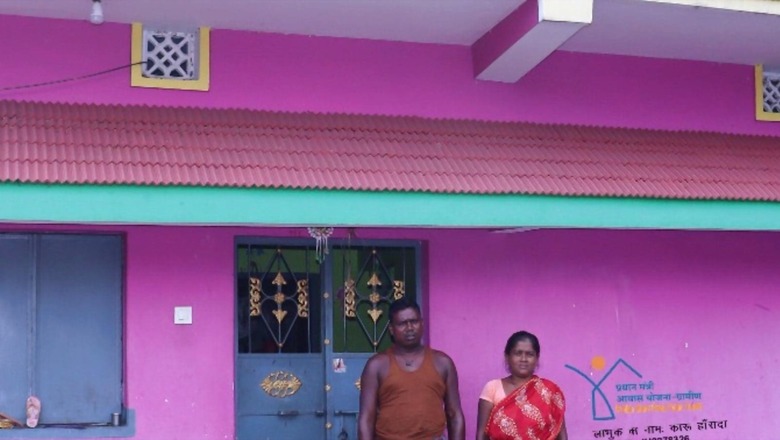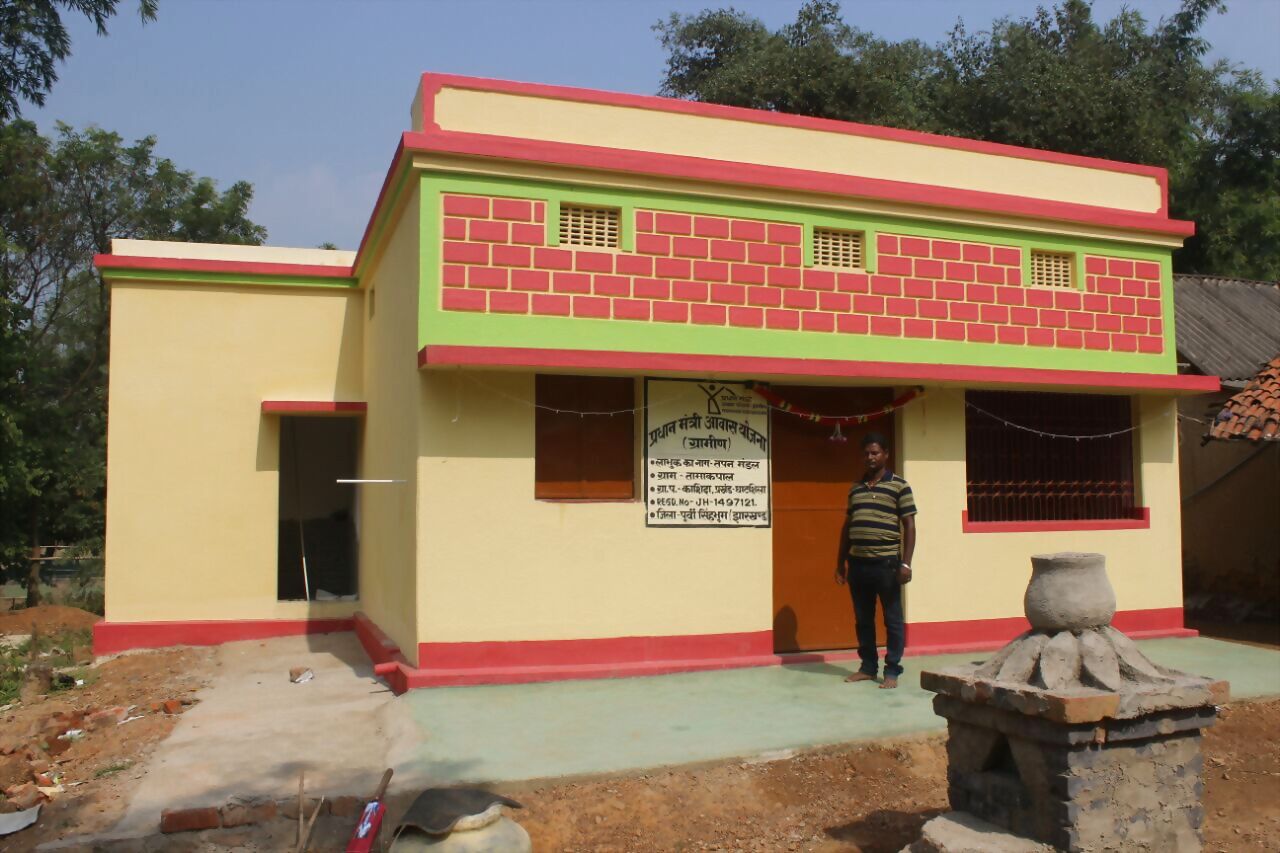
views
India is celebrating ‘Azadi Ka Amrit Mahotsav’ to commemorate 75 years of Independence and the glorious history of its people, culture and achievements. The initiative is dedicated to the people of the country and hold within them the power and potential to enable Prime Minister Narendra Modi’s vision of activating India 2.0, fuelled by the spirit of Aatmanirbhar Bharat.
On May 31, PM Modi interacted with the beneficiaries of several welfare schemes on completion of the eight years of his government. The PM addressed the Garib Kalyan Sammelan, which was organised across the country, from Shimla in Himachal Pradesh during which elected representatives directly interacted with the public.
Beneficiaries of nine key departments of the Centre gave their feedback, which helped the Prime Minister understand the impact of these welfare schemes in people’s lives, besides exploring convergence and saturation with regard to different government programmes.
Of the nine departments, which are under review, Pradhan Mantri Awas Yojna–Gramin (PMAY-G), holds significance owing to the Prime Minister’s vision for providing ‘housing for all’ by 2022, when the country is celebrating ‘Azadi Ka Amrit Mahotsav’.
The government has allocated Rs 48,000 crore (Rs 20,000 crore for PMAY-G) for this purpose. Under this scheme, the government has already sanctioned over 2.41 crore houses of which the construction of over 1.82 crore houses has been completed.
As a field functionary, I have observed that with the additional budgetary allocations in hand, the states ought not look towards the scheme merely to create physical infrastructure rather plan to converge it with other government schemes and develop them as a wheel of socio-economic development for the beneficiaries.
Some of the ideas, which could add value to the scheme includes utilisation of space and roofs as a collective powerhouse for the generation of renewable energy; targeted beneficiaries could be provided with skill development and vocational training to ensure livelihood and harness human potential; federation of beneficiaries may also be developed for social reforms and economic prosperity; besides developing organic farming clusters and linking them with digital marketing platforms to enhance income. Introducing design and technology, promotion of green buildings under PMAY-G and gender equity would add new dimensions.
These measures will not only help the country in reducing the target of carbon emission by 2030 but also achieve the Sustainable Development Goals (SDG) covering different aspects such as no poverty, zero hunger, good health and well-being, clean water and sanitation, affordable and clean energy, decent work and economic growth and climate action. The ambitious scheme has created infrastructure which could be used as a launch pad for ideating and implementing additional schemes, which could transform the socio-economic aspects of the beneficiaries, thus giving fillip to the rural economy.
The aforesaid suggestions are also based on the experience the rural development department have had in implementation of the scheme in Jharkhand, coupled with a few successful innovations, which have already borne fruits on the ground.
Implementing the scheme in a state like Jharkhand has had its own set of challenges, largely due to the inaccessible and forested terrain. But the department has been able to meet all these challenges and has completed 89% of the 99.8% sanctioned houses (11,98,353) against the set target of 11,99,896 house under PMAY-G. The new target of 4,03,504 houses under Awaas+ set late last year, 95.6% of them have been sanctioned in the state.

On the face of it, the scheme aims at providing a two-room pucca house to the poor. But the real outcome of these 25 square metre houses is way beyond. Consider the following examples: Mrs. Jansewak Bediain Potanga panchayat of Hazaribag said PMAY has been a boon, which saved her from challenges of rains, cold, and snake-bites; Jhabbu Doam of Namudag Panchayat of Palamu in Jharkhand opines that the pucca house has enhanced his social status and self-esteem; Hari Tana Bhagat of Manhegaon Panchayat of Lohardaga narrated that the house helped his children study steadily.
What’s common among them? They all got a house made of brick and cement. But all have a different take on the real benefits they are accruing from it. This means the PMAY-G scheme is scripting a new transformation of these areas in a silent mode.
In implementing such scheme of this scale, transparency is key; both for timely execution of the project as well as plugging pilferage of funds. Instructions have been issued to complete the construction within 100 days of sanction and accordingly progress is monitored.
MGNREGA vendors are also engaged for uninterrupted supply of construction materials. In addition to displaying Permanent Waiting List (PWL) on the wall, dedicated call centre is also established for grievances redressal.
Additionally, social audit has been conducted in 1510 Gram Panchayats (GPs), and it has been decided to carry it out in all of over 4000 GPs across the state. The state is utilising extensive data analytics to monitor the progress of lower performing GPs and Blocks. Pending issues in CP-GRAM Grievances, ATR on VIP References, CAG Para and NLM report is NIL. Also, Awas Mitras—women volunteers are tagged with each house for its effective monitoring and completion.

While the scheme has provided all-weather houses to the poor, it has also proved to be a platform for convergence of other central government schemes such as electricity and gas connection, toilets and water connection besides creating additional man days under the MGNREGA. Several other schemes of the state government such as the Birsa Harit Gram Yojna, nutritional kitchen garden under Didi Badi Yojna, animal shed under Mukhyamantri Pasudhan Vikas Yojna provided additional benefits to the new house owners.
Crores have already been benefitted under the scheme but lakhs are still awaiting their dream house.
With a major boost in the budgetary allocation for the year ahead, it is expected that the people would have their dreams realised in 2022 when the Centre, according to PM Modi’s vision, has its eye set on providing ‘housing for all’. In fact, their wait could bring them additional fruits with on-ground convergence of other schemes and technological interventions as the policy-makers continue to gain an experience with every passing day.
The official journey of Azadi Ka Amrit Mahotsav (AKAM) commenced on March 12, 2021. It started with a 75-week countdown and will end post a year on August 15, 2023. Based on the visible change on the ground, I am confident that AKAM would be a game-changer and would help in pulling out citizens of the poverty trap, promote inclusive growth and end up improving ease of living of the citizens. PMAY-G is indeed the Pivotal spoke in wheel of ‘Azadi Ka Amrit Mahotsav’.
Dr. Manish Ranjan belongs to Indian Administrative Service (IAS) and is currently serving as the Secretary in the department of Rural Development in Jharkhand. The views expressed in this article are those of the author and do not represent the stand of this publication.
Read all the Latest Opinions here


















Comments
0 comment